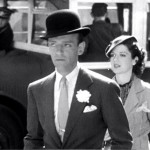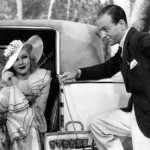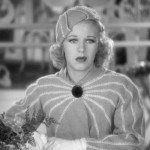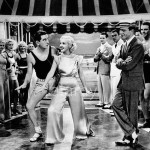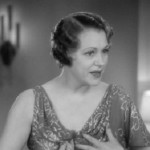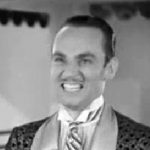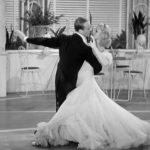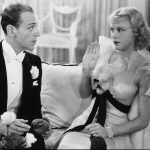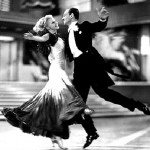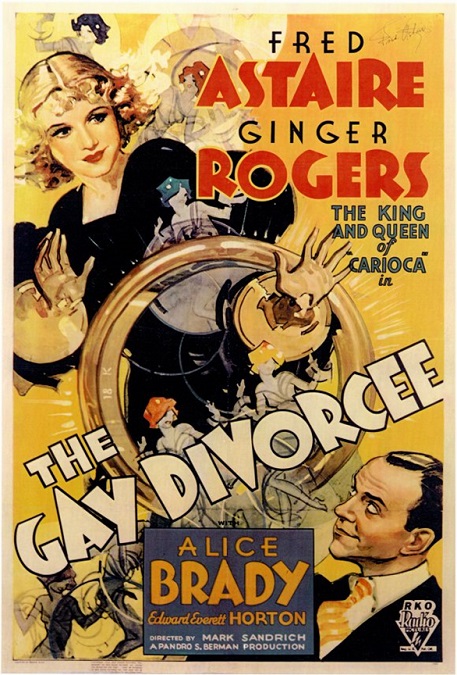
The Gay Divorcee – 1934
This movie was a bit of a disappointment. I was expecting a happy, feel-good musical, and for the most part, that is what I got. What I found disappointing was the lack of subtlety, memorable music and a plausible plot. I understood that a film starring Fred Astaire and Ginger Rogers would be a dance musical, and I have no problem with that. But most of the dancing had so little to do with the plot that it all seemed unnecessary.
Let me explain. The main character was a professional dancer named Guy Holden, played by Astaire. He has a chance meeting with the beautiful Mimi, played by Rogers. He falls instantly in love, though she does not return his affections. In fact, she rather dislikes him. But then things turn creepy as Guy actively stalks her. When he finds her, he gets in his car and a nice little high-speed car chase ensues. When he finally catches her, he traps her behind a phony “Road Closed” sign and forces her to talk to him. She repeatedly tells him to leave her alone. She makes it quite clear that she is not interested and wants him to go away. But Guy is so in love with her that when she says no, he ignores her objections.
Mimi’s problem is that she is unhappily married and wants to get a divorce. She goes to an idiot lawyer because her husband refuses to grant her a one. His solution is to have her go to a hotel and stay in a room with a hired man while a private investigator comes and catches the two together, causing the husband to request a divorce from an unfaithful wife. But the lawyer happens to be Guys friend and they all go to the same hotel. The rest of the plot, of which there isn’t much, is pretty predictable.
The original stage musical featured music by Cole Porter, but when it was made into a movie, only one of Porter’s songs was kept. It was called Night and Day, and in my opinion, it was the best song in the film. But there were a few other songs written for the movie. The most notable was a song called The Continental. It was a twenty minute dance number with singing that was pretty superfluous. At least this number started out in a good fashion, being a part of the plot. Guy and Mimi are watching the dancing hotel guests from their balcony. Guy says that he likes the music and wonders what it is called. Mimi says that it is The Continental. The two say that they want to go down to the dance floor and join the dancing.
They do, and we have another delightful little dance number. After a few minutes the pair completed their dance and the hotel guests applauded for them. But then dozens of dancers rush onto the dance floor and we are treated to another eighteen minutes of flashy dancing, matching costumes and meaningless music. The whole scene could have been over when Guy and Mimi were done dancing. It would have saved us a lot of time, and everyone would have been happier.
And as for the dancing itself, it was alright. Much of dancing was fairly simple formations, meaning that the costumes were all either black or white and the choreographer used that to create shapes and formations. All the black dresses form a line here. All the white dresses form a line there. Look: a big plus sign! Now move to position two! Look: a big equal sign! Now look at it spinning!
Of course, we really only came to see Astaire and Rogers dance. So I’ll comment on their dancing in particular. I’m sorry to say this, but Fred Astaire was not a very good actor, though he could dance. He knew all his moves, he knew all his steps, but his style seemed a bit jerky and frantic. He was a very thin, gangly sort of a man and when he danced his movements all looked a little forced. But then I watched Ginger Rogers dance. Her dancing was smooth and fluid. She glided across the floor like a breeze, though her energy, at times, seemed a little lacking.
But when the two of them danced together, it was like magic. They were both better together than they were separately. They moved as one being and were perfectly in synch. Those were the times when I stared at the screen in amazement. That was what audiences really came to see.
But I really don’t think this should have been nominated for Best Picture. The vapid story and Astaire’s equally vapid acting were not enough to warrant such a high honor. And besides… Gene Kelly was really a better dancer.
